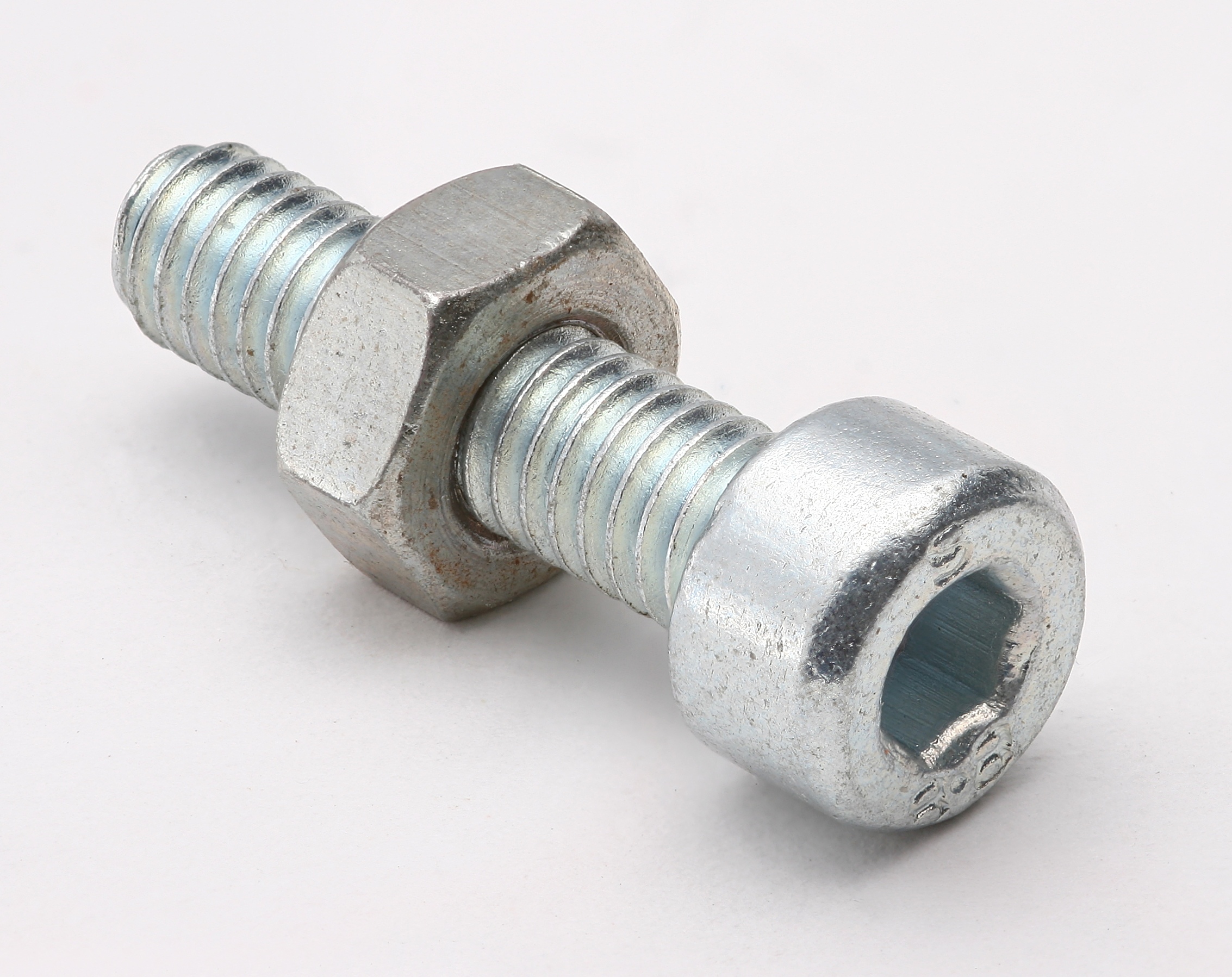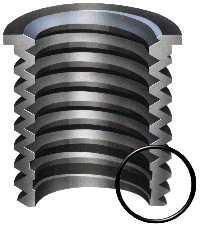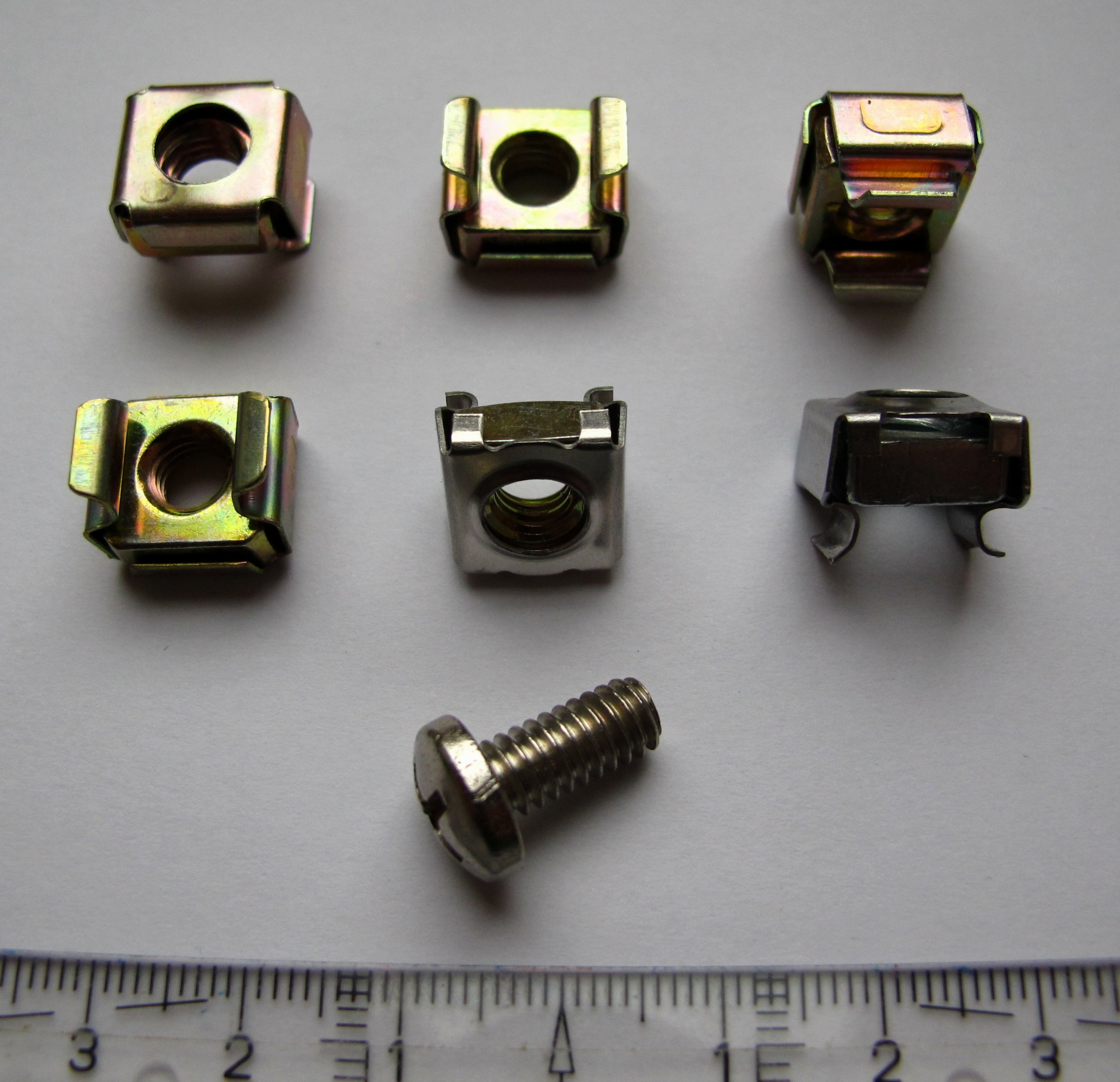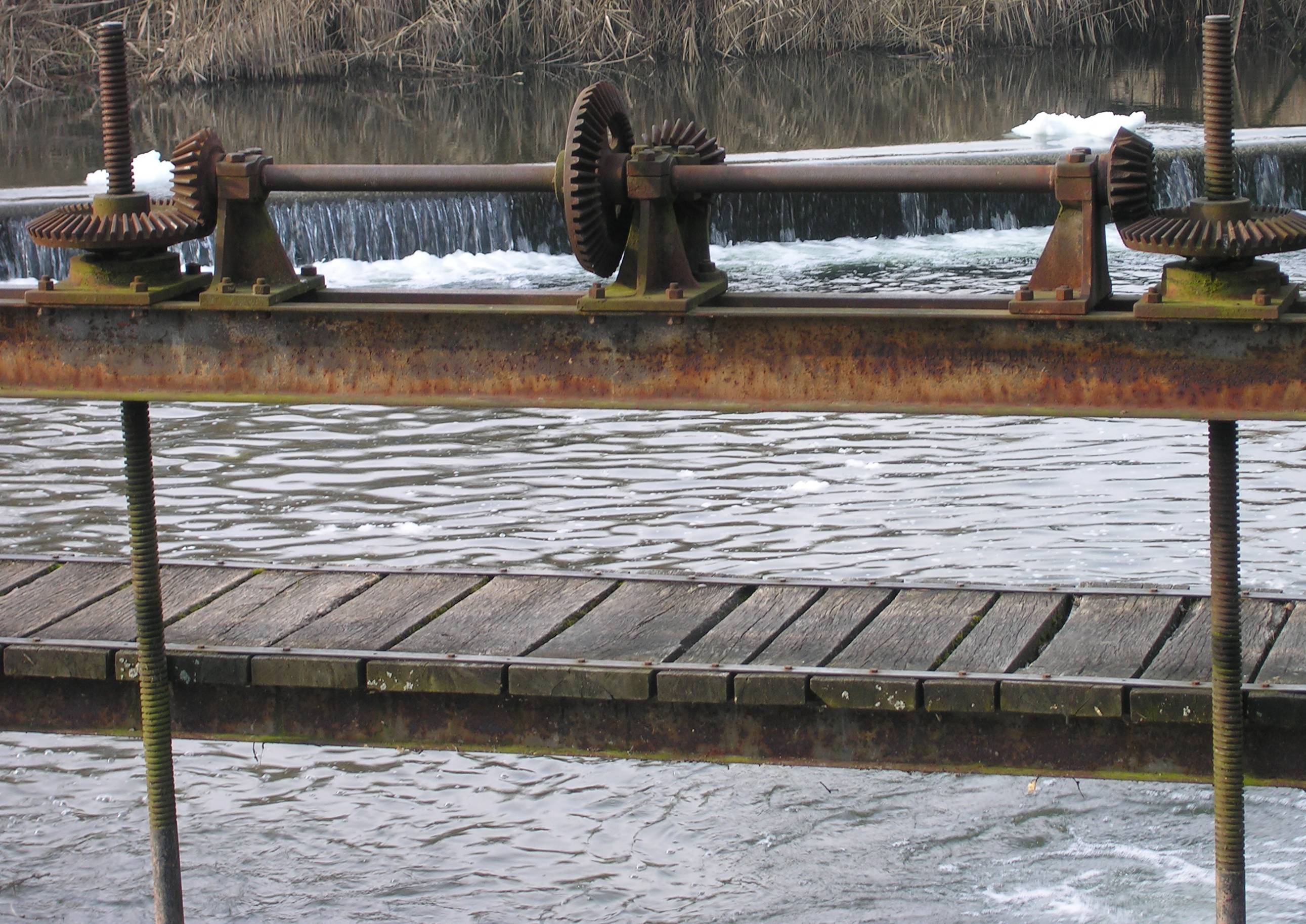|
Clip-on Nut
A clip-on nut, also known as a sheet metal nut or a speed nut (but this is ambiguous, see speed nut), is a type of nut designed to be clipped to sheet metal. It is a type of captive nut commonly made as a cage nut. Types They come in many forms based upon: where they clip on, shape, and type of thread. Each clip-on nut is designed for only a small range of sheet metal gauges (thicknesses). They are usually made from spring steel. G-nut A G-nut, or G-style nut, is shaped like a "G" and clips to the edge of a sheet metal object. It is different from all of the other types in that it is meant to clip over a small flange on the edge of the sheet metal. The threads are from an integrated nut that has a special boss to sit in a hole in the sheet metal. J-nut A J-nut is a nut that clips to the edge of the sheet metal. It is named after the way it is shaped; the thread is on the long side of the "J". The thread may either be of a speed nut form or have an integrated hex or square n ... [...More Info...] [...Related Items...] OR: [Wikipedia] [Google] [Baidu] |
Speed Nut
A speed nut, aka sheet metal nut or Tinnerman nut, is a type of locknut with two sheet metal prongs that act as one thread. They are made from spring steel. The fastener serves the functions of both a lock washer and a nut. As the fastener is tightened in the nut the prongs are drawn inward until they exert pressure on the root of the thread on the fastener. When the fastener is tightened, the base of the nut, which is arched, elastically deforms and applies a force to the fastener, which locks it from loosening under vibrations. There are many different types of speed nuts, mostly dependent on the shape of the nut, how it attaches to the workpiece, and what type of screw can be used. Most types are designed for either machine screws or sheet metal screws. Some nuts do not attach to the workpiece. These are usually shaped as either a rectangle, a flange nut, or a hex nut; the rectangular speed nut is also known as a flat-style speed nut. Speed nuts that attach to the workp ... [...More Info...] [...Related Items...] OR: [Wikipedia] [Google] [Baidu] |
Nut (hardware)
A nut is a type of fastener with a screw thread, threaded hole. Nuts are almost always used in conjunction with a mating bolt (fastener), bolt to fasten multiple parts together. The two partners are kept together by a combination of their threads' friction (with slight deformation (engineering)#Elastic deformation, elastic deformation), a slight Tension (physics), stretching of the bolt, and compression (physics), compression of the parts to be held together. In applications where vibration or rotation may work a nut loose, various locking mechanisms may be employed: lock washers, jam nuts, eccentric double nuts, specialist adhesive thread-locking fluid such as Loctite, safety pins (split pins) or lockwire in conjunction with castellated nuts, nylon inserts (nyloc nut), or slightly oval-shaped threads. Square nuts, as well as bolt heads, were the first shape made and used to be the most common largely because they were much easier to manufacture, especially by hand. While rare to ... [...More Info...] [...Related Items...] OR: [Wikipedia] [Google] [Baidu] |
Sheet Metal
Sheet metal is metal formed into thin, flat pieces, usually by an industrial process. Sheet metal is one of the fundamental forms used in metalworking, and it can be cut and bent into a variety of shapes. Thicknesses can vary significantly; extremely thin sheets are considered foil or leaf, and pieces thicker than 6 mm (0.25 in) are considered plate, such as plate steel, a class of structural steel. Sheet metal is available in flat pieces or coiled strips. The coils are formed by running a continuous sheet of metal through a roll slitter. In most of the world, sheet metal thickness is consistently specified in millimeters. In the U.S., the thickness of sheet metal is commonly specified by a traditional, non-linear measure known as its gauge. The larger the gauge number, the thinner the metal. Commonly used steel sheet metal ranges from 30 gauge to about 7 gauge. Gauge differs between ferrous ( iron-based) metals and nonferrous metals such as aluminum or copper. Cop ... [...More Info...] [...Related Items...] OR: [Wikipedia] [Google] [Baidu] |
Threaded Insert
A threaded insert, also known as a threaded bushing, is a fastener element that is inserted into an object to add a threaded hole. They may be used to repair a stripped threaded hole, provide a durable threaded hole in a soft material, place a thread on a material too thin to accept it, mold or cast threads into a work piece thereby eliminating a machining operation, or simplify changeover from unified to metric threads or vice versa. Types Thread inserts come in many varieties, depending on the application. Threaded inserts for plastics are used in plastic materials and applied with thermal insertion or ultrasonic welding machines. Manufacturers of ready-to-assemble furniture often ship the parts with threaded inserts and other kinds of knock-down fasteners pre-installed. People who use sheet metal or sandwich panel or honeycomb sandwich-structured composite often install threaded inserts to spread shear, tension, and torque loads over a larger area of the material. Captive n ... [...More Info...] [...Related Items...] OR: [Wikipedia] [Google] [Baidu] |
Cage Nut
A cage nut or caged nut (also called a captive or clip nut) consists of a (usually square) nut in a spring steel cage which wraps around the nut. The cage has two wings that when compressed allow the cage to be inserted into the square holes, for example, in the mounting rails of equipment racks. When the wings are released, they hold the nut in position behind the hole. Cage nuts conforming to this description were patented in 1952 and 1953. This design requires insertion tools to install the cage nut into the hole. Newer designs featuring a squeeze-and-release tab allow for tool-less installation. The square-hole cage nut can be used wherever a square hole can be punched. An older type of captive-nut uses a spring clip that holds the nut and slides on the edge of a thin sheet. While this type of cage nut can only position the nut a fixed distance from the edge of a thin plate, it works equally well with square and round holes. A patent for such a nut was granted in 1946.George A. ... [...More Info...] [...Related Items...] OR: [Wikipedia] [Google] [Baidu] |
Sheet Metal Gauge
Sheet metal is metal formed into thin, flat pieces, usually by an industrial process. Sheet metal is one of the fundamental forms used in metalworking, and it can be cut and bent into a variety of shapes. Thicknesses can vary significantly; extremely thin sheets are considered foil or leaf, and pieces thicker than 6 mm (0.25 in) are considered plate, such as plate steel, a class of structural steel. Sheet metal is available in flat pieces or coiled strips. The coils are formed by running a continuous sheet of metal through a roll slitter. In most of the world, sheet metal thickness is consistently specified in millimeters. In the U.S., the thickness of sheet metal is commonly specified by a traditional, non-linear measure known as its gauge. The larger the gauge number, the thinner the metal. Commonly used steel sheet metal ranges from 30 gauge to about 7 gauge. Gauge differs between ferrous ( iron-based) metals and nonferrous metals such as aluminum or copper. Copp ... [...More Info...] [...Related Items...] OR: [Wikipedia] [Google] [Baidu] |
Spring Steel
Spring steel is a name given to a wide range of steels used in the manufacture of different products, including swords, saw blades, springs and many more. These steels are generally low-alloy manganese, medium-carbon steel or high-carbon steel with a very high yield strength. This allows objects made of spring steel to return to their original shape despite significant deflection or twisting. Grades Many grades of steel can be hardened and tempered to increase elasticity and resist deformation; however, some steels are inherently more elastic than others: Applications * Applications include piano wire (also known as music wire) such as ASTM A228 (0.80–0.95% carbon), spring clamps, antennas, springs (e. g. vehicle coil springs or leaf springs), and s-tines. * Spring steel is commonly used in the manufacture of swords with rounded edges for training or stage combat, as well as sharpened swords for collectors and live combat. * Spring steel is one of the most popular mate ... [...More Info...] [...Related Items...] OR: [Wikipedia] [Google] [Baidu] |
Boss (engineering)
In engineering, a boss is a protruding feature on a work piece. A common use for a boss is to locate one object within a pocket or hole of another object. For instance, some motors use a precisely machined boss on the front face to locate it on the mating part. Like a process on a bone, bosses on castings can provide attachment points or bearing surfaces. The term 'boss' when used in engineering can also relate to a finishing edge around (usually) a circular opening that allows the opening to locate onto, or within another opening thus locating or joining two items together with a view to the location or joining being temporary or semi-permanent. A common everyday example of a boss is the housing of the rotation spindle in a washing machine drum, or on a cylinder lawn mower at the end of the cutting blade cylinder which may house a bearing set to allow the cylinder to rotate through one plane, but held firm in another plane. A boss can also be a brass eyelet on a sail. It is a gener ... [...More Info...] [...Related Items...] OR: [Wikipedia] [Google] [Baidu] |
Screw Thread
A screw thread, often shortened to thread, is a helical structure used to convert between rotational and linear movement or force. A screw thread is a ridge wrapped around a cylinder or cone in the form of a helix, with the former being called a ''straight'' thread and the latter called a ''tapered'' thread. A screw thread is the essential feature of the screw as a simple machine and also as a threaded fastener. The mechanical advantage of a screw thread depends on its ''lead'', which is the linear distance the screw travels in one revolution. In most applications, the lead of a screw thread is chosen so that friction is sufficient to prevent linear motion being converted to rotary, that is so the screw does not slip even when linear force is applied, as long as no external rotational force is present. This characteristic is essential to the vast majority of its uses. The tightening of a fastener's screw thread is comparable to driving a wedge into a gap until it sticks fast thro ... [...More Info...] [...Related Items...] OR: [Wikipedia] [Google] [Baidu] |
Hex Nut
A nut is a type of fastener with a threaded hole. Nuts are almost always used in conjunction with a mating bolt to fasten multiple parts together. The two partners are kept together by a combination of their threads' friction (with slight elastic deformation), a slight stretching of the bolt, and compression of the parts to be held together. In applications where vibration or rotation may work a nut loose, various locking mechanisms may be employed: lock washers, jam nuts, eccentric double nuts, specialist adhesive thread-locking fluid such as Loctite, safety pins ( split pins) or lockwire in conjunction with castellated nuts, nylon inserts (nyloc nut), or slightly oval-shaped threads. Square nuts, as well as bolt heads, were the first shape made and used to be the most common largely because they were much easier to manufacture, especially by hand. While rare today due to the reasons stated below for the preference of hexagonal nuts, they are occasionally used in some situat ... [...More Info...] [...Related Items...] OR: [Wikipedia] [Google] [Baidu] |
Square Nut
A square nut is a four-sided nut. Compared to standard hex nuts, square nuts have a greater surface in contact with the part being fastened, and therefore provide greater resistance to loosening (though also greater resistance to tightening). They are also much less likely to become rounded-off after repeated loosening/tightening cycles. Square nuts are typically mated with square-headed bolts. Square nuts are used along with flat washers to avoid damage from its sharp edges and increase the strength of the fastener. Square nuts can have standard, fine or coarse threading with platings of zinc yellow, plain, zinc clear, tin and cadmium, among others. Most can meet either the ASTM A194, ASTM A563, or ASTM F594 standard. Benefits Tighten easily by gripping two sides Work well in tight spaces by using needle nosed pliers Work well in blind spots using pliers or a wrench Can be a quick gauge to measure the position of the nut Application Commonly used in furniture as a blin ... [...More Info...] [...Related Items...] OR: [Wikipedia] [Google] [Baidu] |
Two Spire Clips
2 (two) is a number, numeral and digit. It is the natural number following 1 and preceding 3. It is the smallest and only even prime number. Because it forms the basis of a duality, it has religious and spiritual significance in many cultures. Evolution Arabic digit The digit used in the modern Western world to represent the number 2 traces its roots back to the Indic Brahmic script, where "2" was written as two horizontal lines. The modern Chinese and Japanese languages (and Korean Hanja) still use this method. The Gupta script rotated the two lines 45 degrees, making them diagonal. The top line was sometimes also shortened and had its bottom end curve towards the center of the bottom line. In the Nagari script, the top line was written more like a curve connecting to the bottom line. In the Arabic Ghubar writing, the bottom line was completely vertical, and the digit looked like a dotless closing question mark. Restoring the bottom line to its original horizon ... [...More Info...] [...Related Items...] OR: [Wikipedia] [Google] [Baidu] |







